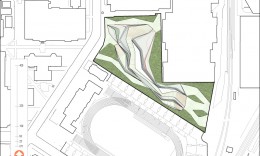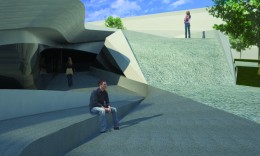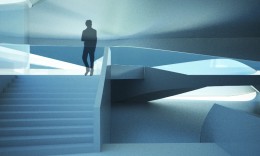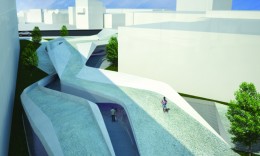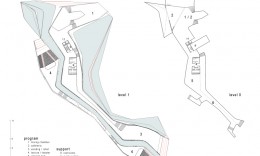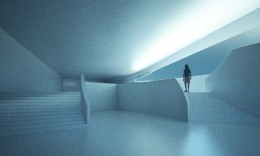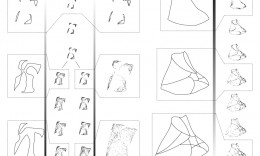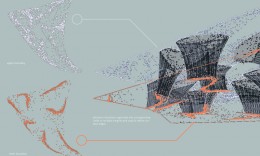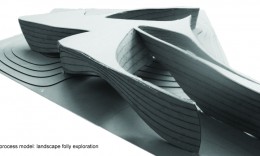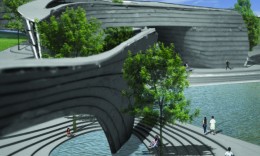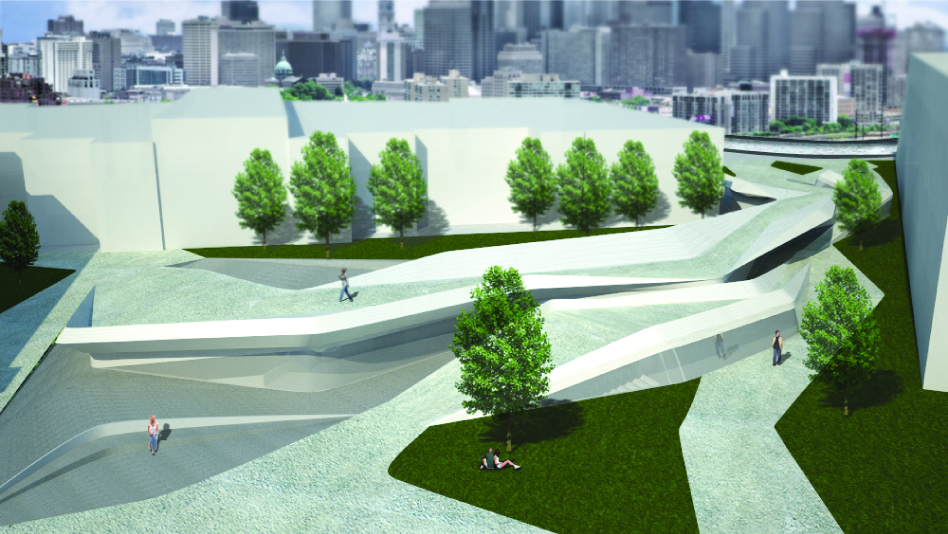
One aspect of chaos theory relates to collections of non-linear equations that describe the phenomena of “strange attractors”. The attractors are defined by point clouds in either two or three dimensional space. The points are drawn iteratively, with each new point’s coordinates being calculated according to the prior point’s coordinates as it is processed through the equation. An infinite variety of attractor forms can be generated by applying different coefficients to these non-linear equations. Slight variations in the values of these coefficients begin to develop attractor “families”, whose base logic appears consistent even as change is introduced, as seen in the abbreviated taxonomy below.
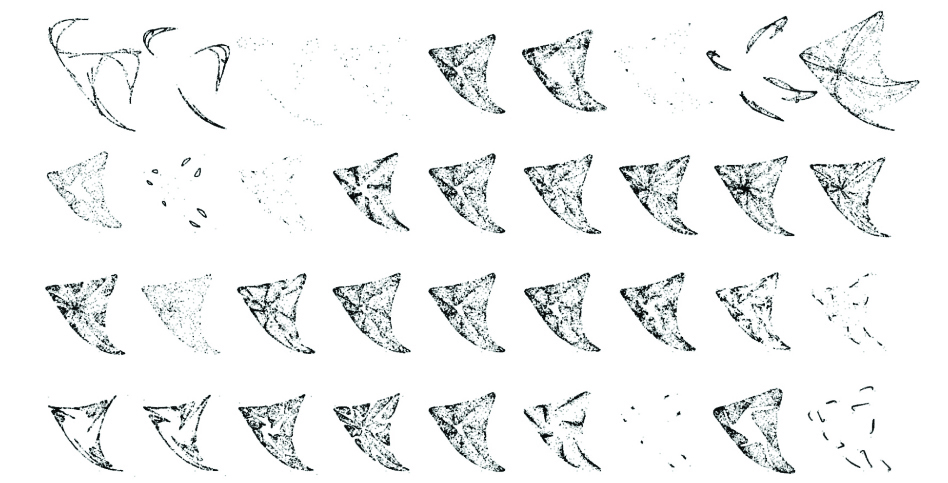
It is possible through techniques of animation to understand how calibrating the coefficient values can transform an attractor and allow for the further refinement of the more static variations captured in the taxonomy.
Attractors in Motion from David Stasiuk on Vimeo.
As these points collect in great numbers, they begin to organize space, imply movement, and create order through a form of chaotic emergence. The traces of these equations are familiar in the natural world, and can describe processes across a variety of scales and applications: flocks of birds, cloud formations, and crowd movements can all be modelled with attractors.
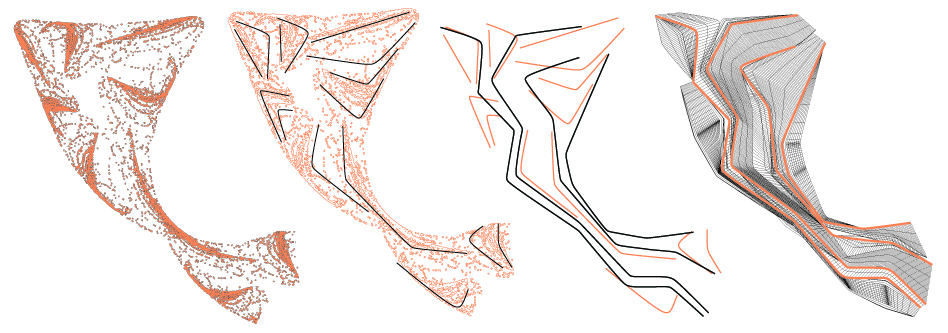
This project investigates a variety of forms derived from attractors that are applicable to defining architectural organization. It introduces the organizing logic of the attractor as a means to navigate a hybrid program for University of Pennsylvania. Each year, the University hosts the Penn Relays, which bring athletes from across the country to participate in a major track and field meet. Programmatically, the articulation of the strange attractor is applied to a mixed use facility that can manage the great influx of people that occur over the short time period required for the meet, and still remain a vital part of campus life for the remainder of the year. The exterior space operates as an active and dynamic landscape that can be occupied by the athletes during the Penn Relays. The interior operates primarily underground in order to maintain accessibility to the landscape component. The interior space itself is developed as a mixed-use student union with a cafe, open work space, and facilities for hosting films, lectures, and mixed-media gallery events.
